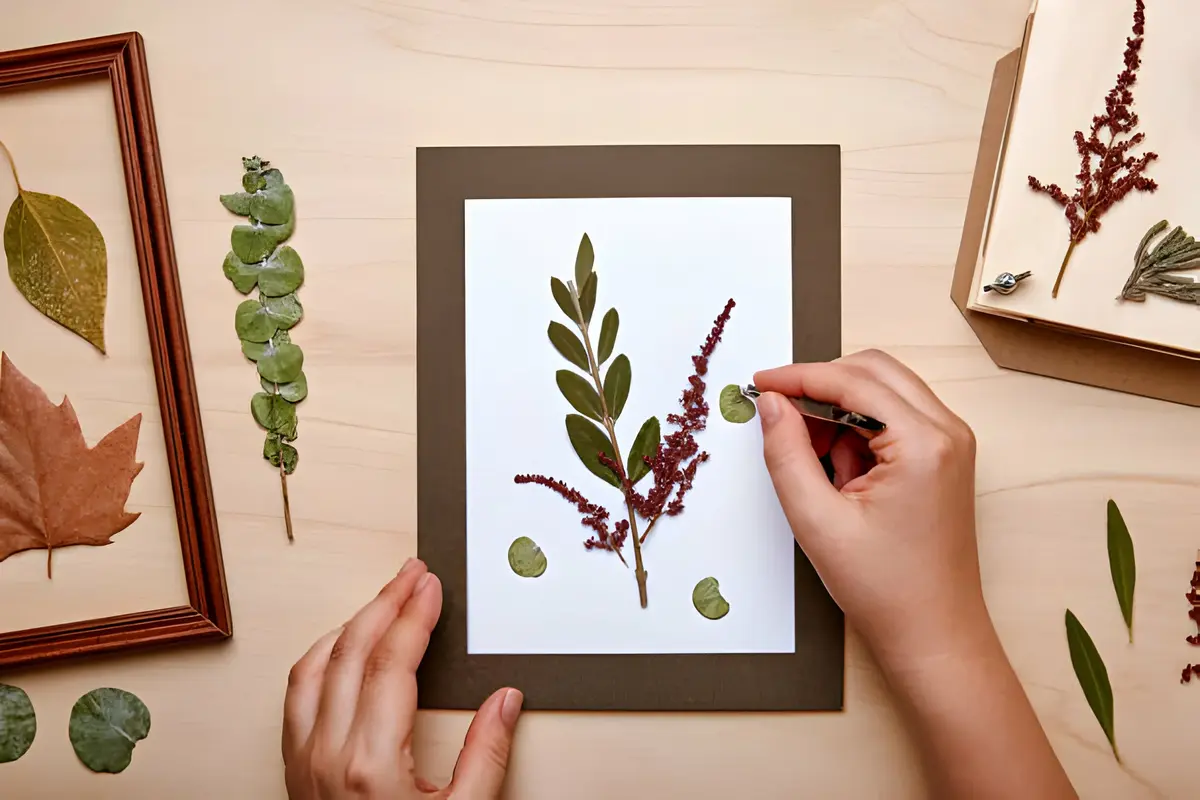Pressed flowers capture the ephemeral beauty of nature and offer a timeless way to preserve memories from gardens, special events, or nature walks. However, maintaining the color and integrity of these delicate botanicals requires proper storage techniques. This article delves into the various methods and considerations for storing pressed flowers, ensuring they remain as vibrant and intact as the day they were pressed.
Preparing Pressed Flowers for Storage
Before storage, ensuring that flowers are completely dry is crucial:
- Pressing Process: Begin by pressing flowers using traditional methods like a flower press or heavy books. The pressing period typically ranges from a few weeks to a month, depending on the flower’s thickness and moisture content.
- Dryness Check: Confirm the flowers are thoroughly dry before storage. They should feel papery and free of any moisture to touch. Any residual dampness can lead to mold or discoloration during storage.
Choosing the Right Storage Materials
The materials used for storing pressed flowers play a significant role in their preservation:
- Acid-Free Paper: Store pressed flowers between sheets of acid-free paper to prevent deterioration. Acidic materials can cause flowers to yellow over time.
- Cardboard or Archival Materials: For added protection, use cardboard or archival-quality materials. These provide a stable, flat surface that helps maintain the flowers’ shape and color.
Ideal Storage Conditions
Creating an optimal environment is key to prolonging the life of pressed flowers:
- Temperature and Humidity: Store pressed flowers in a cool, dry place. High humidity and temperature fluctuations can damage the delicate petals and fade colors.
- Light Exposure: Keep pressed flowers away from direct sunlight, as UV rays can cause fading and brittleness. A dark storage space like a closet or drawer is ideal.
Storage Methods for Pressed Flowers
There are several effective methods for storing pressed flowers, each with its own advantages:
In Between Pages
One of the simplest storage methods is placing pressed flowers in books or between sheets of paper:
- Layering: Place each pressed flower between two sheets of acid-free paper. You can then store these in a heavy book or a stack of books.
- Benefits and Drawbacks: This method is straightforward and doesn’t require special materials, but accessing the flowers can be cumbersome, and there’s a risk of damage if not handled carefully.
Using Storage Boxes
Archival boxes offer a more organized and accessible storage solution for pressed flowers:
- Selecting the Right Box: Choose an archival storage box that’s sturdy and acid-free. These boxes protect the flowers from physical damage and environmental factors.
- Organizing Flowers: Within the box, layer the pressed flowers between sheets of acid-free paper. You can categorize them by color, size, or type for easy access and aesthetic arrangement.
- Advantages: Storage boxes provide better protection against external pressure and are ideal for large collections. They also make it easier to view and rearrange your collection without disturbing the delicate flowers.
Framing Pressed Flowers
Framing is a creative way to both display and preserve pressed flowers:
- Choosing Frames and Glass: Use frames with UV-protective glass to prevent fading caused by sunlight. Ensure the frame is deep enough to accommodate the flowers without pressing against the glass.
- Mounting Flowers: Carefully arrange and mount the flowers on acid-free paper or mat board. You can use a tiny amount of adhesive or a mounting technique that doesn’t involve direct application to the flowers.
- Display Considerations: While framing allows for beautiful displays, avoid placing frames in areas with high humidity or direct sunlight.
Maintenance and Care
Regular maintenance is key to preserving the quality of your pressed flowers:
- Regular Checks: Periodically inspect your stored flowers for signs of fading, moisture, or insect damage. Early detection of these issues can prevent widespread damage.
- Handling With Care: When handling pressed flowers, use clean, dry hands or tweezers. Be gentle to avoid crumpling or breaking the fragile petals.
- Repositioning Flowers: If you need to move or rearrange the flowers, do so carefully. Ensure the new storage location continues to meet the ideal conditions for preservation.
Handling Common Issues
Even with the best care, certain issues can arise when storing pressed flowers. Here’s how to address them:
- Fading Colors: If you notice colors fading, it may be due to light exposure. Store the flowers in a darker place or use UV-protective glass if they are framed.
- Moisture Damage: Signs of moisture, like mold or mildew, require immediate action. Remove affected flowers and ensure the storage area is dry. Silica gel packets can help absorb excess moisture.
- Pest Infestation: If pests are detected, isolate the affected flowers to prevent spread. Consider using natural deterrents and ensure the storage area is clean and free of attractants.
Conclusion
Preserving the delicate beauty of pressed flowers is both an art and a science. By choosing the right storage materials, maintaining ideal conditions, and employing appropriate storage methods, you can successfully safeguard these botanical treasures. Whether tucked away in archival boxes, displayed elegantly in frames, or carefully placed in the pages of a book, your pressed flowers can be enjoyed for years to come.
Remember that each flower and collection is unique, requiring a personalized approach to storage. Regular checks and careful handling are vital for maintaining the integrity of your pressed flowers. Experiment with different methods to find what works best for your specific needs, and enjoy the timeless beauty of your pressed botanical collection.


